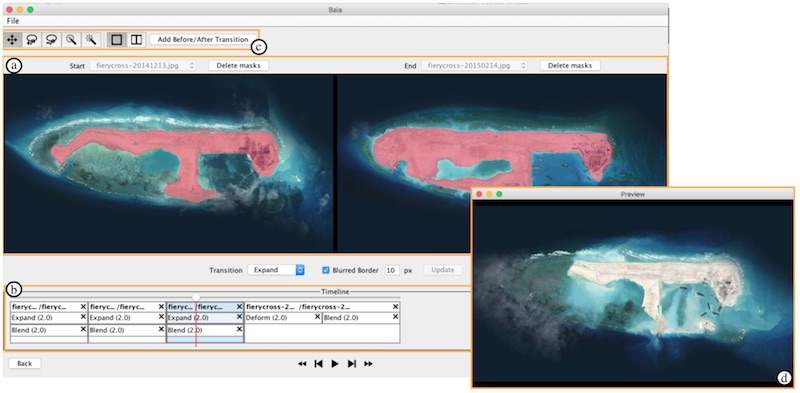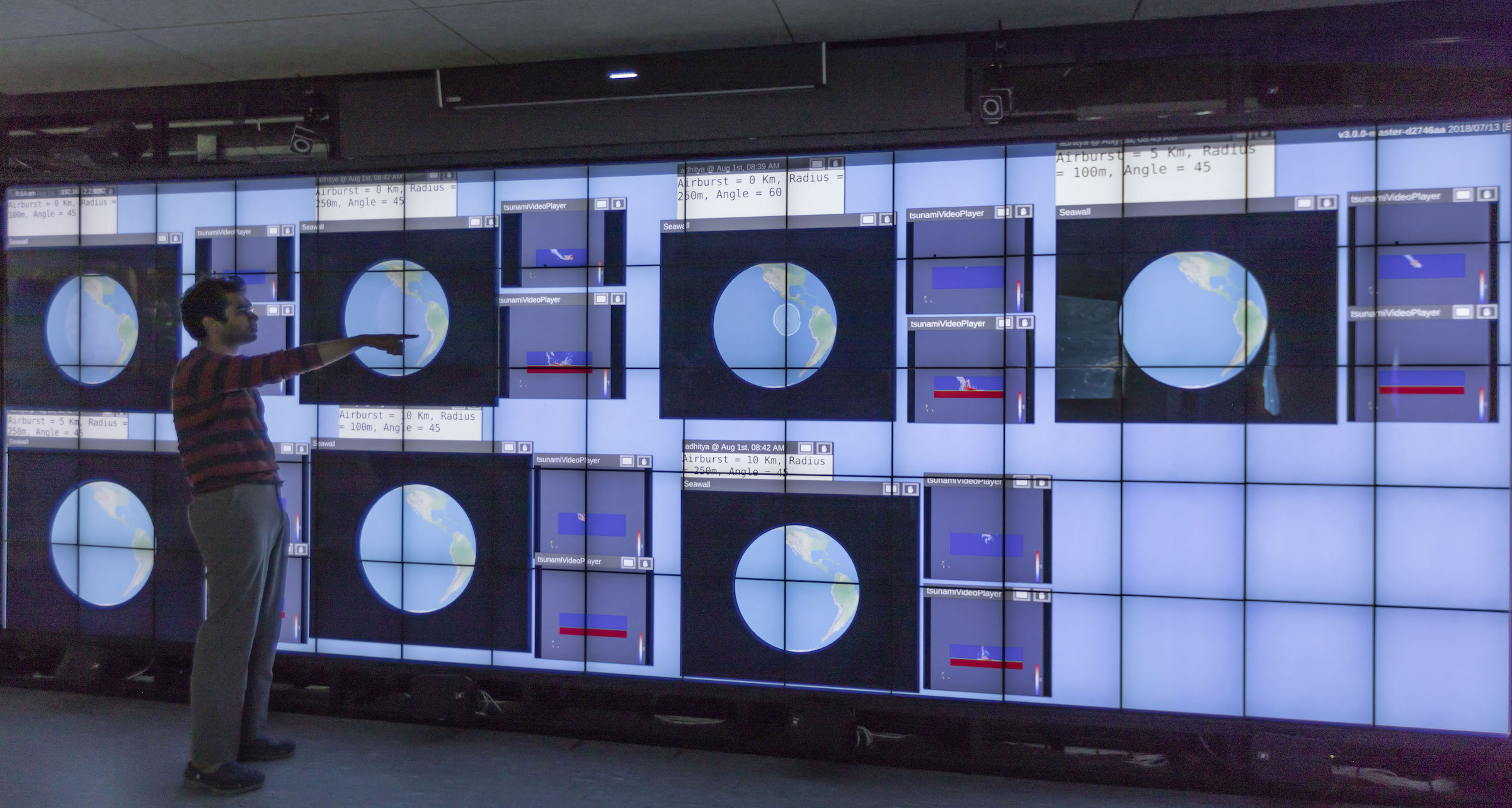Section:
New Software and Platforms
Platforms
Figure
2. Baia is a framework to create advanced animated transitions between before-and-after satellite images. Before-and-after image pairs show how entities in a given region have evolved over a specific period of time. Baia relies on a pixel-based transition model to convey the underlying phenomenon that caused this evolution in a meaningful manner. The animation editor pictured here enables authors to easily represent common types of changes thanks to predefined animation primitives and to sequence different changes across time.
|
|
Platform: WILDER
Figure
3. Multiple asteroid-generated tsunami simulations running simultaneously on the WILDER ultra-wall. The high display capacity of this interactive surface makes it possible to show, for each of the simulations: a planet-wide view showing the propagation of the tsunami on the globe, a close-up on the region of impact, showing a simulation of one or more scalar fields, parameters of the simulation.
|
|
Ultra-high-resolution wall-sized displays [39] feature a very high pixel density over a large physical surface. Such platforms have properties that make them well-suited to the visualization of very large datasets. They can represent the data with a high level of detail while at the same time retaining context: users can transition from an overview of the data to a detailed view simply by physically moving in front of the wall display. Wall displays also offer good support for collaborative work, enabling multiple users to simultaneously visualize and interact with the displayed data. To make them interactive, wall-sized displays are increasingly coupled with input devices such as touch frames, motion-tracking systems and wireless multitouch devices, in order to enable multi-device and multi-user interaction with the displayed data. Application areas for such visualization platforms range from the monitoring of complex infrastructures and crisis management situations to tools for the exploratory visualization of scientific data.
WILDER is the latest ultra-high-resolution wall-sized display set up at Inria Saclay, and is one of the nodes of the Digiscope EquipEx. We use this platform for multiple projects, both fundamental HCI research, and research and development activities for specific application areas such as geographical informations systems (Figure 3) and astronomy.
WILDER was used in the projects that led to the following publications this year: [23], [31].




